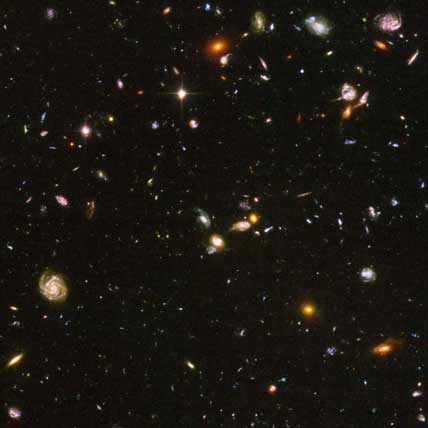
The Hubble Space Telescope observed a small region of sky in the constellation Eridanus to produce the Hubble Ultra Deep Field. One million seconds of observations from the Advanced Camera for Surveys and the Near Infrared Camera and Multiobject Spectrometer were used to assemble the deepest view of the universe so far.
Courtesy NASA, ESA, S. Beckwith (STScI) and the HUDF Team.
This morning astronomers at the Space Telescope Science Institute (STScI) presented the deepest view yet of a small section of our universe. Dubbed the Hubble Ultra Deep Field (HUDF), the image of a 3-arcminute-square area in the constellation Fornax reveals 10,000 galaxies. Some 400 orbits were used between September 24, 2003, and January 16, 2004, to take more than 11 days worth of observations with the Advanced Camera for Surveys and another 4½ days with the Near-Infrared Camera and Multi-Object Spectrometer. Researchers will delve into the data to identify star systems that formed a few hundred million years after the Big Bang.
The view above is a cropped and reduced portion of the HUDF, only 15 percent of the full field. Higher-resolution versions — as large as 110 MB — are available from STScI's Web site.
 0
0
Comments
You must be logged in to post a comment.